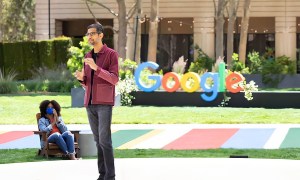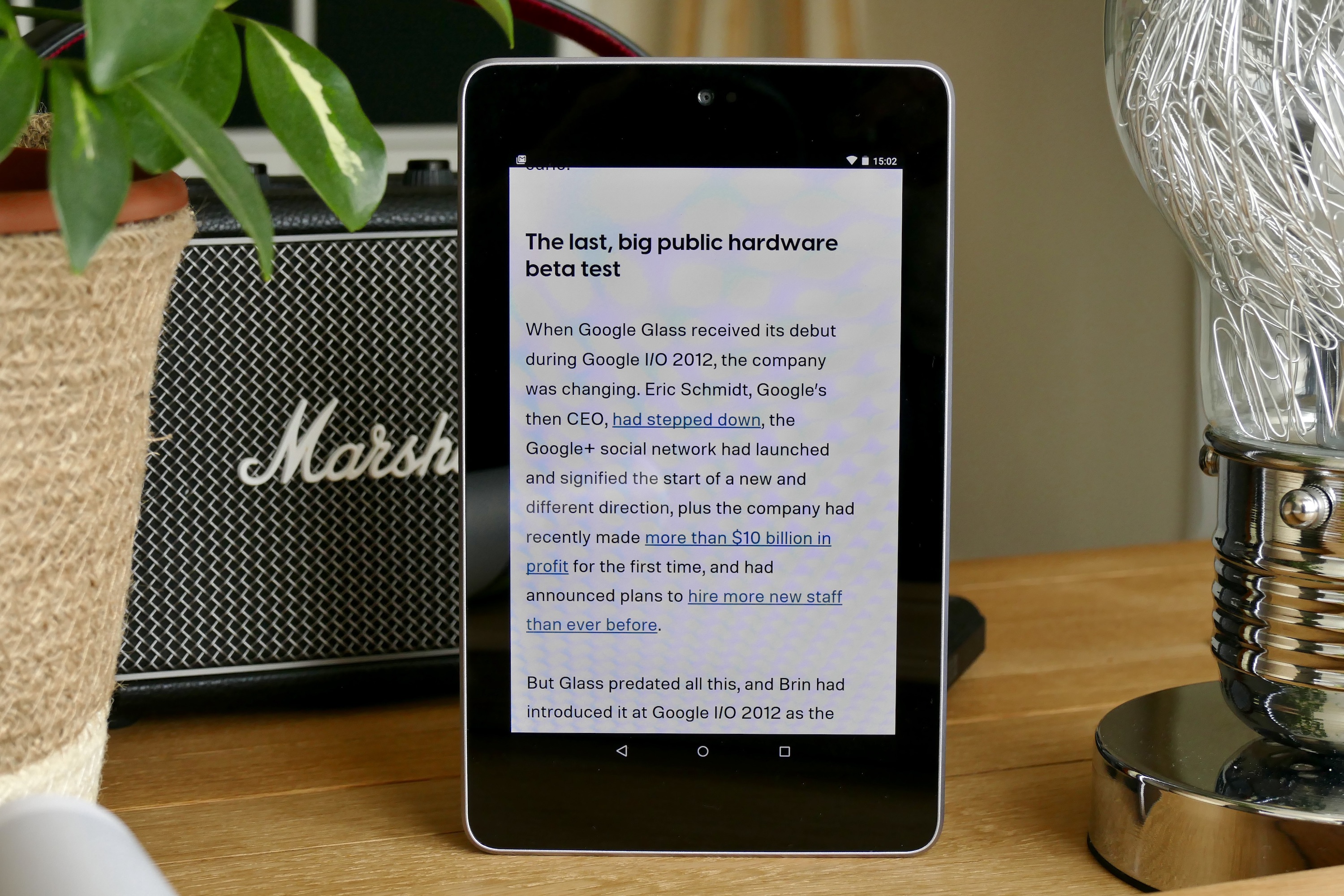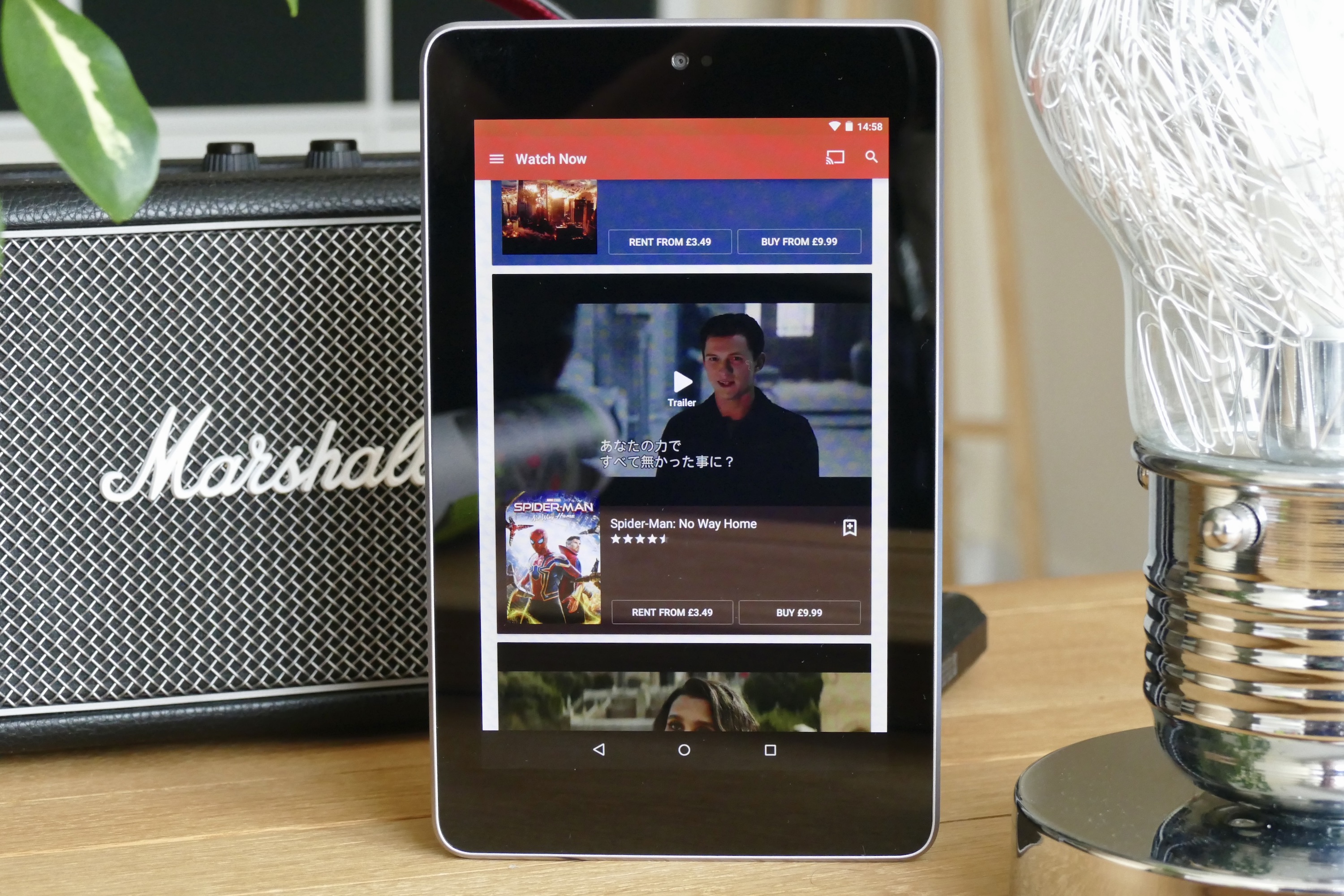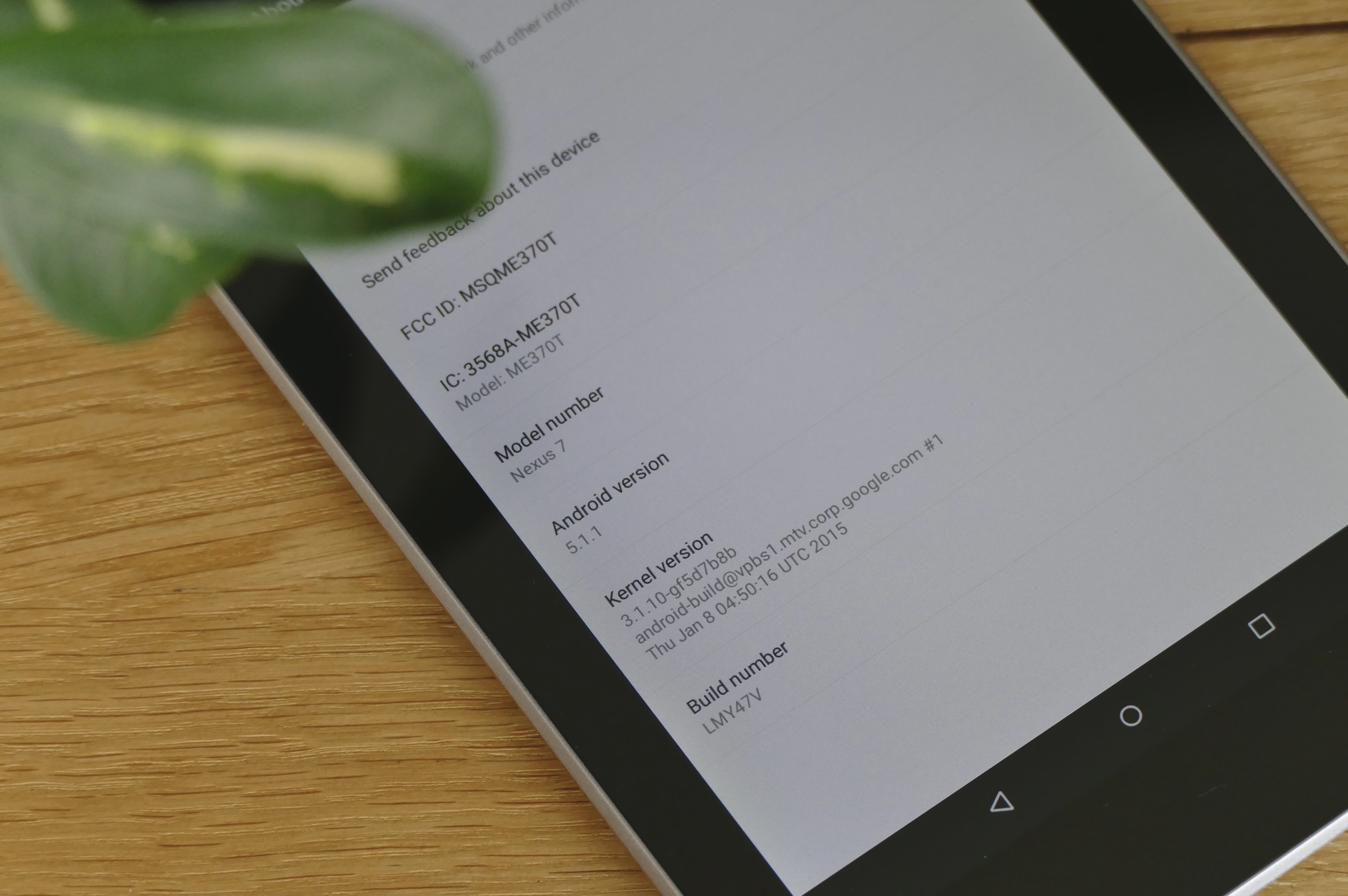
Google Glass got most of the attention, hardware-wise, during Google I/O 2012, but Google had a second, far more modest piece of hardware at the event in the Nexus 7 tablet. It was widely available, didn’t cost very much, and unlike Glass, never went on to cause any controversy.
But despite its ordinariness, when you look back at the Nexus 7, its impact was undeniable. It tapped into an explosion of interest around tablets, had the right price tag, and was built by one of the most innovative tablet makers around at the time. Ten years on, it stands alongside the original iPad as one of the most important tablets released.
This is the second in a pair of retrospectives published ahead of Google I/O 2022, with the first concentrating on the 10-year anniversary of Google Glass.
Tablets were exciting
Tablets were exciting in 2012. The third generation 9.7-inch Apple iPad had been released and most other manufacturers were clamoring to attract people away from it. Microsoft had Windows RT software on the Surface, and Amazon was pushing ahead with its cheap and cheerful Kindle Fire range, but outside of these two big names, the choice of Android tablets was wide and interesting.

BlackBerry’s PlayBook was still relatively new, HTC was still a player in the world of mobile tech and had launched its 7-inch Flyer tablet, Samsung was expanding its tablet range beyond the first 7-inch Galaxy Tab, and Motorola was still in the game with its Xoom tablet. LeapFrog catered to kids with the LeapPad Explorer, and Barnes & Noble was taking on Amazon with the Nook.
However, looking back, there were two companies that greatly influenced the tablet space around this time, but for very different reasons. Indirectly, they both helped catapult the Nexus 7 to success. Asus was at the top of its tablet game with unusual products like the 2-in-1 Android-powered Eee Pad Transformer and various spinoffs, plus the dual-purpose phone/tablet hybrid PadFone line, making it one of the most creative and innovative tablet manufacturers at the time.
Google teamed with Asus to build the Nexus 7, and it couldn’t have chosen a better partner. But there was another company making headlines, but for less auspicious reasons. Hewlett-Packard discontinued the unloved HP TouchPad in 2011, and it sold the remaining stock off for as little as $100. The response was huge and, for a short time, this essentially dead product was about the hottest piece of tech you could get if you could find one. Suddenly, those priced out of the $500 iPad market could find a tablet from a well-known, established brand for not much money.
Nexus 7 didn’t disappoint
As the public realized there was a reason no one bought the HP TouchPad at full price, Asus and Google came together to announce the $200, 7-inch Nexus 7 tablet at Google I/O 2012. It had exactly the right credentials to capture the attention of those keen to try out one of those super new tablet things, but unwilling to pay big bucks for one.

The $200 price didn’t mean it had disappointing specs, another sensible decision on Google’s part. Compared to Amazon’s similarly priced 7-inch Kindle Fire of the time, it had a better quality, higher resolution screen, more internal storage, a selfie camera, stereo speakers, Bluetooth, GPS, and Nvidia’s hyped-up mobile processor of the time, the Tegra 3. The Kindle Fire was a small and cheap tablet, while the Nexus 7 was a small, cheap, and desirable tablet.
It also came at the right time for Google. The Play Store was expanding rapidly, and during the I/O 2012 keynote, the company added movies, TV shows, books, and magazines to it. The Nexus 7 was the ideal point of delivery for Google’s multimedia efforts, and the low price enabled it to instantly take on its chief competitor, Amazon and the Kindle Fire. Google was really banking on Nexus 7 owners stocking up on things to read and watch, as it was reportedly selling the Nexus 7 at cost price.
Everyone wanted one
In geek circles, Google I/O had the reputation of a must-attend event for several reasons, one of them being the freebies Google gave its developer attendees, and the I/O 2012 package included the Galaxy Nexus phone, the Nexus Q streaming device, and the Nexus 7 tablet. Those of us watching from afar looked on with envious eyes, and that anticipation translated into considerable demand when the tablet eventually reached stores.

Unsurprisingly, the cheap, high-spec Nexus 7 was a massive success. For the first few months after release, Google couldn’t keep up with demand and most retailers sold out of their allocations very quickly, with the $250 16GB version being particularly elusive at the time. Although no official figures have ever been released, Asus said it had sold a million Nexus 7 tablets every month between July and October 2012. By the end of the year, Google and Asus had reportedly captured 8% of the tablet market with the Nexus 7.
The Nexus 7 did what Google wanted and introduced the delights of the Play Store to more people, but it also performed another important job: it made the Nexus hardware range better known. Before its arrival, the Nexus range had been all about smartphones, with the original Nexus One, the Nexus S, and the Galaxy Nexus being released before it to a modest amount of attention.
The Nexus 7 paved the way for the Nexus 4 and, in 2014, the incredibly popular Nexus 5 phone, arguably the second-biggest breakthrough Nexus product. Without the Nexus 7 linking the Nexus name with strong specs, good build quality, and a low price, the Nexus 5 may not have gathered so much adoration as quickly as it did.
Right place, right time
Picking the Nexus 7 up today, it’s surprising just how great the little tablet looks and feels. The instantly recognizable dimpled back looks stylish and has masses of natural grip, while the size is just right for holding with one hand. Despite being thicker than most modern tablets, it’s not unmanageable, and the weight — similar to most large iPad tablets today — gives it an air of quality and sturdiness.
It seems there may be space for a successor to the Nexus 7.
The screen, which is low resolution for today, is pleasant to view and Android 5.1.1 is nostalgic to use. It’s really only let down by its performance, as the Nvidia Tegra 3 inside this original first-generation Nexus 7 feels every bit of its 10-year-old age. Give it some modern power and a software update, and the Nexus 7 would be perfectly usable today.
The Nexus 7 was the epitome of a right place, right time product, able to exploit huge interest in tablets by striking the correct balance between price and specifications while capitalizing on the buzz around Google and the sentiment thar it was “on the people’s side” compared to elitist Apple and its expensive products. Many will look back fondly on the Nexus 7 and remember it as an unpretentious device that provided excellent value.
Google abandoned the Nexus 7 in 2015, replacing it with the larger Nexus 9 and eventually getting bored with dedicated Android tablets entirely, preferring to explore 2-in-1 portable hybrids like the PixelBook Go. If you want a 7-inch tablet today, much like in late 2012, you’re probably going to end up with a $500 Apple iPad Mini or a $50 Kindle Fire 7. Put like this, it seems there may be space for a successor to the Nexus 7. Is anyone interested in a Google Pixel 7 tablet?




